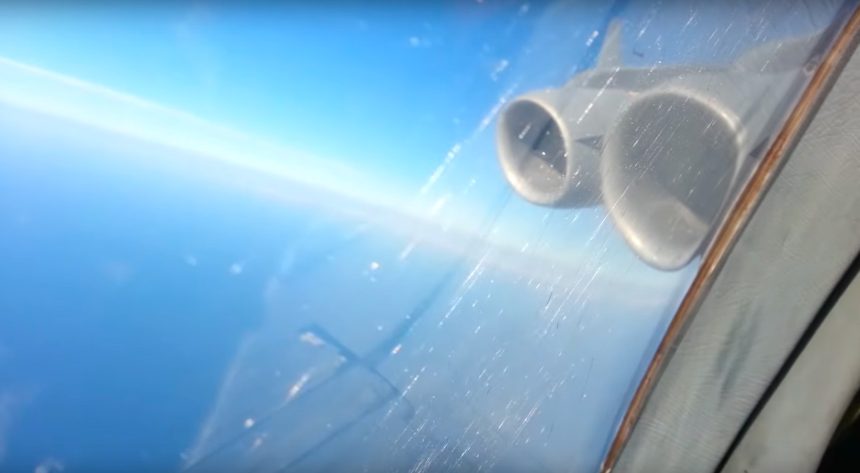Yeah, airlifters may need to perform this kind of maneuver.
Despite its size, the C-17 airlifter is pretty agile aircraft and its aircrews are trained to maneuver quite aggressively, especially at low altitude, as proved, for example, by the videos that showed C-17’s visits to the famous Star Wars Canyon in the U.S. or Mach Loop in the UK that we have published in the past.
The reasons why Globemasters (as well as other tactical cargo aircraft) perform that kind of flying is explained here below, in what I wrote about low level flying, commenting a cool shot of an F-35 flying the the Sidewinder low level route in California early this year:
[…] what makes the low level training so interesting, is the fact that aircraft flying the low level routes are involved in realistic combat training. Indeed, although many current and future scenarios involve stand-off weapons or drops from high altitudes, fighter pilots still practice on an almost daily basis to infiltrate heavily defended targets and to evade from areas protected by sophisticated air defense networks as those employed in Iran, Syria or North Korea. While electronic countermeasures help, the ability to get bombs on target and live to fight another day may also depend on the skills learnt at treetop altitude.
To be able to fly at less than 2,000 feet can be useful during stateside training too, when weather conditions are such to require a low level leg to keep visual contact with the ground and VMC (Visual Meteorological Conditions). Aircraft involved in special operations, reconnaissance, Search And Rescue, troops or humanitarian airdrops in trouble spots around the world may have to fly at low altitudes.
That’s why low level corridors like the Sidewinder and the LFA-7 aka “Mach Loop” in the UK are so frequently used to train fighter jet, airlifter and helicopter pilots.
And such training pays off when needed. As happened, in Libya, in 2011, when RAF C-130s were tasked to rescue oil workers that were trapped in the desert. The airlifter took off from Malta and flew over the Mediteranean, called Tripoli air traffic control, explained who they were and what they were up to, they got no reply from the controllers, therefore continued at low level once over the desert and in hostile airspace.
Now, take a look at the following stunning footage (it’s not recent, so some of our readers may have already seen it).
It shows a tactical descent from 25,000 to 5,000 feet, in lesss than 60 seconds: it means a vertical speed of -20,000 fpm (feet per minute)! Not bad.
This kind of maneuver is used for quick transitions from high altitude to low altitude (or to landing) where it is important to reduce the exposure to the MANPADS (Man Portable Air Defense Systems) and heat-seaking missiles, or to escape low level to an aerial threat. During the descent, the C-17 pilots can use the thrust reversers to slow the aircraft down (preventing the aircraft to accelerate past the VNE – Never Exceed speed) while keeping a steep angle.









